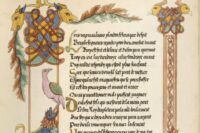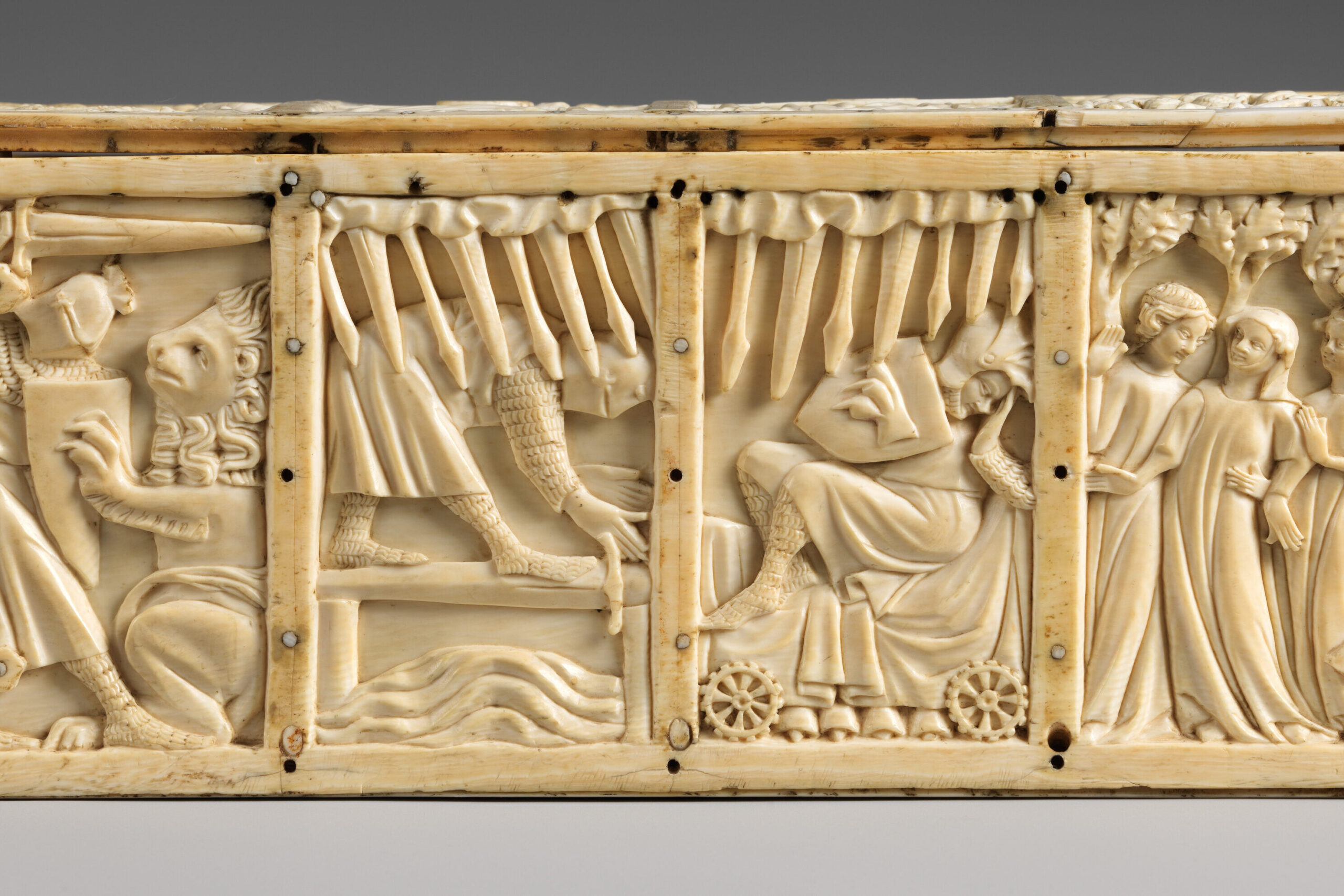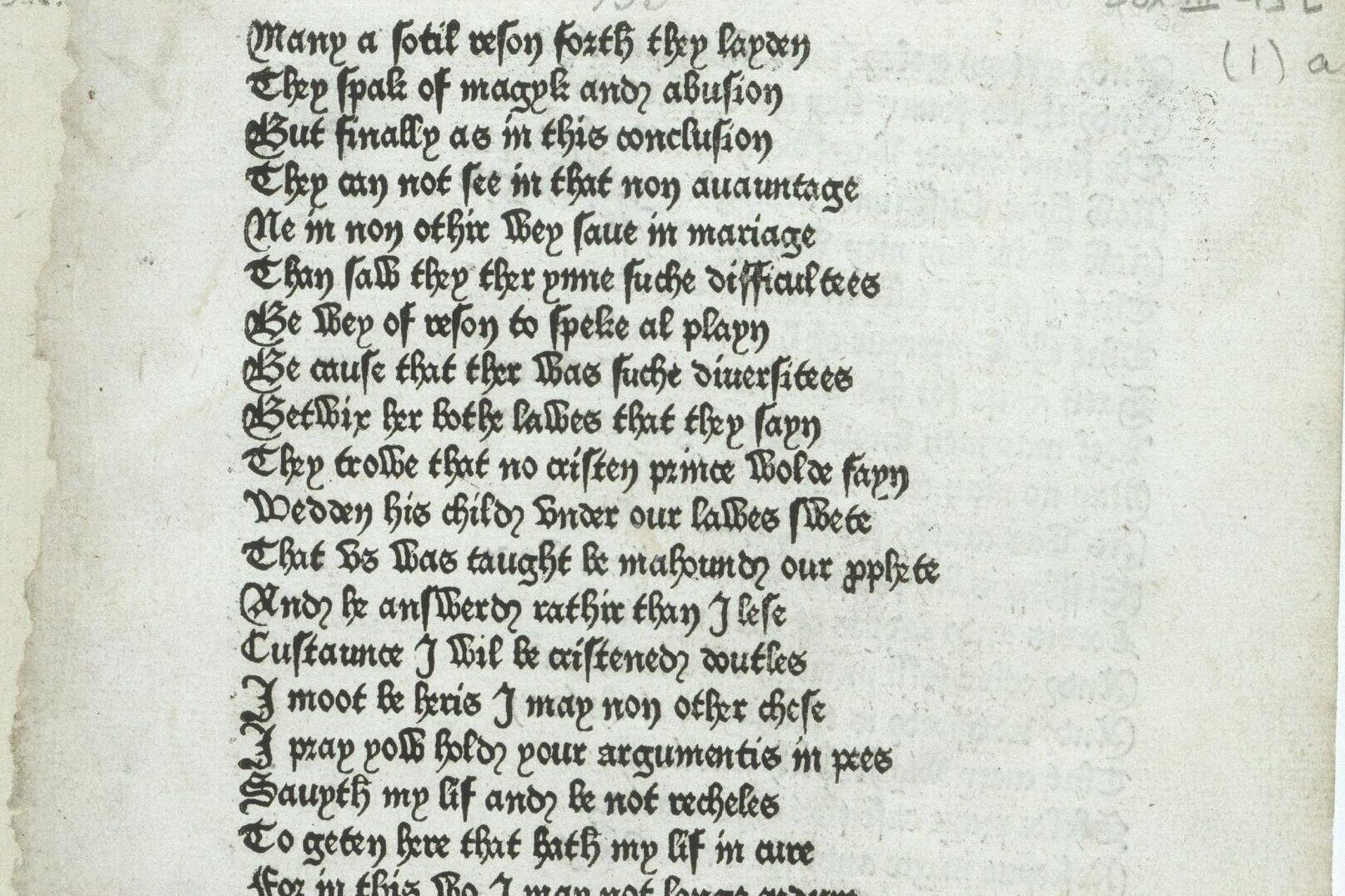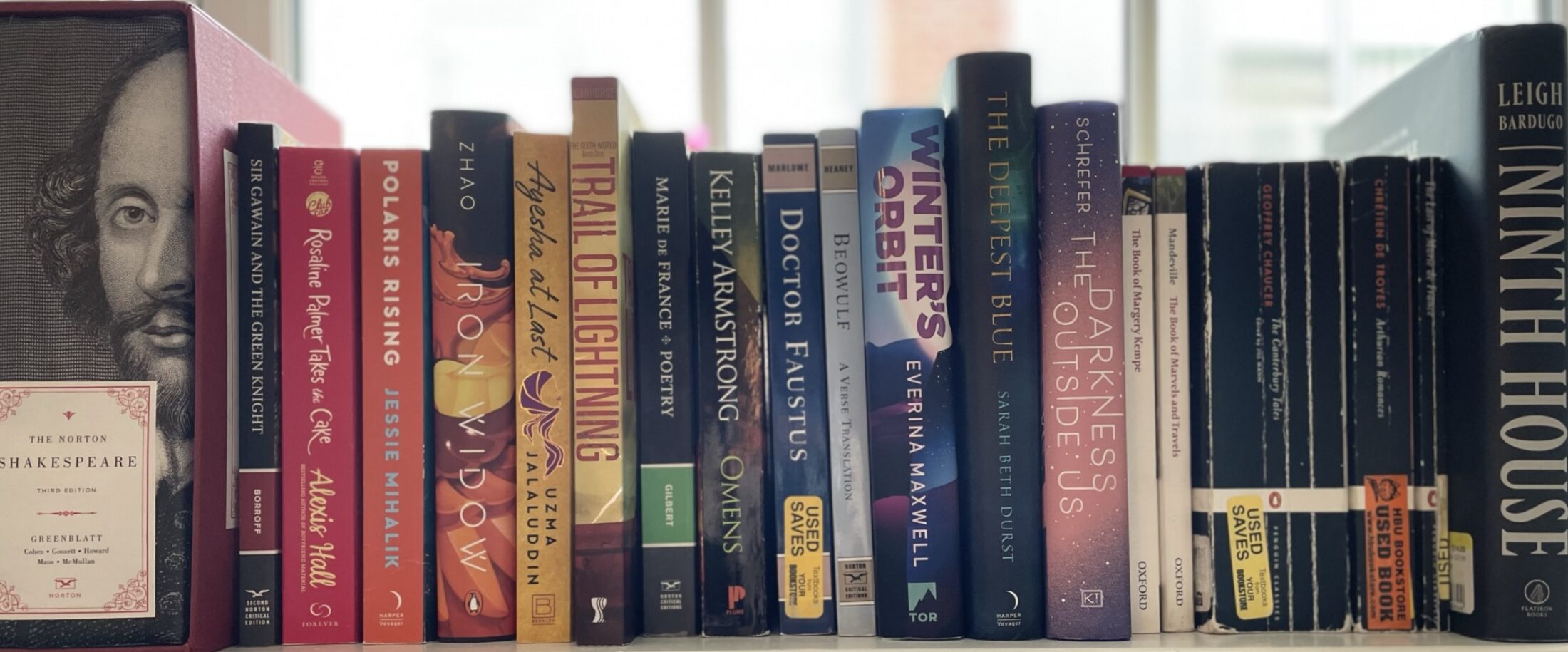ca.1150s-1190s, Northern France

Manuscript, c.1893, Paris, On Display at V&A South Kensington, “The text is a version of the romance of Guillaume d’Angleterre by Chrétien de Troyes.”
The Arthurian Romances by Chrétien de Troyes was written in the second half of the twelfth century in Northern France (Kibler 1-3). Marie de Champagne was likely his patroness (Kibler 4-5). Her marriage in 1159 gives scholars a potential starting date for Chrétien de Troyes’s work (Kibler 4-5). He then worked for the Count of Flanders, Philip of Alsace who died in 1191, giving a likely end date for his writing (Kibler 5). Kibler argues Chrétien de Troyes was influenced by the courtly lyric style from southern French troubadours and Geoffrey of Monmouth’s History of the Kings of Britain written in 1136-37 (Kibler 1-3). Eleanor of Aquitaine’s marriages to King Louis VII of France in 1137 and Henry II of England in 1152 “introduced the southern tradition of ‘courtly love’” to the North (Kibler 13). Chrétien de Troyes’ existing manuscripts come from manuscript collections (Kibler 2). Kibler notes “although Latin was still the predominant language for literary production well into the twelfth century, by Cretien’s day it was slowly being supplanted in France by the vernacular language…Old French” (Kibler 11).
ca.1150s-1190s, Northern France

The Twelve Lais by Marie de France was written in the 1100s in Northern France. Marie de France’s identity is largely unknown, however, scholars have posited many potential historical authors from the late twelfth century (Gilbert xi). Marie’s lais likely circulated British courts in the 1170s and 1180s (Burgess 11-12). She wrote in the Old French vernacular, however, scholars have found evidence of her knowledge of both English and Latin (Burgess 22-23). Her texts showed the practice of Courtly Love or “refined love between men and women” (Gilbert xi). Scholars note her “lays were immensely popular with men and women in aristocratic circles” (Burgess 11).
ca.1370s-1400, Cheshire

Sir Gawain and the Green Knight was originally written in Northern England in the 1300s. The poem was written in the last two or three decades of the fourteenth century in Late Middle English with a dialect that “places him in or near Cheshire” (Borroff xiii). The Gawain poet is known to have written five poems, however, scholars do not know any additional information about them (Borroff xiii). The poet was influenced by the tradition of Courtly Love in Arthurian romances (Borroff xxiii).
1387-1400, London

The Canterbury Tales by Geoffrey Chaucer was written in London in the late 1300s. Geoffrey Chaucer began writing The Canterbury Tales in 1387 and finished writing them- to the extent they are finished- when he dies in 1400 (Windeatt xv-xvi). The Canterbury Tales were meant to tell tales along a trip from London to Canterbury and back again, however, the pilgrims fail to even arrive in Canterbury. The likely unfinished fragments making up the tales were gathered after his death and circulated in collections of The Canterbury Tales in the early 1500s (Mann xviii).
